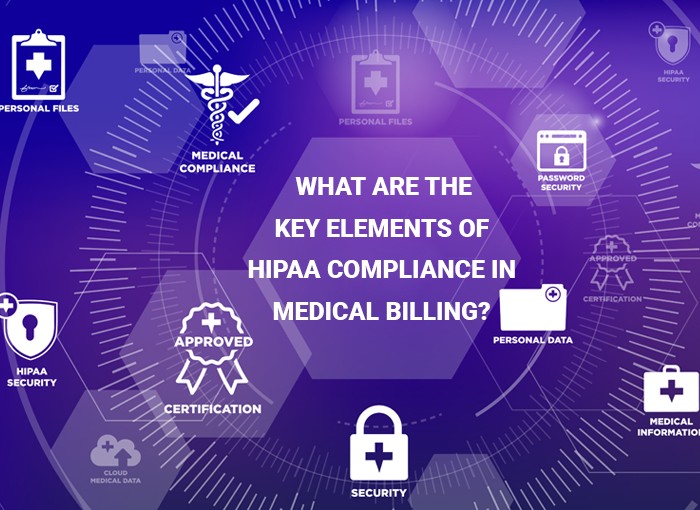What are the key elements of HIPAA compliance in medical billing?
Overview
Security breaches in sensitive industries like healthcare are always bad news. Privacy and confidentiality of patient data is a bigger problem than you might think. It can affect the entire trillion-dollar healthcare industry. If a client faces such a problem, they will lose confidence in your business. This can lead to a serious loss of profits.
Medical billing processes are prone to security issues. There are many cases of medical billing companies being hacked, or of employees losing sensitive data due to their carelessness.
If you want to keep your patients’ data safe, follow Health Insurance Portability and Accountability Act (HIPAA) compliance. It is the only way to determine whether you are good at what you do because it lays down rules and regulations about data security and privacy. You must adhere to them so that you can ensure the safety of your patient’s data.
In the US healthcare sector, there’s a set of rules called HIPAA that is the genuine Bible for data security. Medical billing practices need to comply with its guidelines. The reason is simple: Adhering to them is not a choice, but a requirement for any medical billing firm that wants to serve healthcare providers.
All employees must abide by HIPAA and take accountability for maintaining compliance. They must also take advantage of its ability to prevent fraudulent activity before, during, and after the claims process. This is because medical billing is incredibly important. It can help prevent fraudulent activity.
Key elements of HIPAA compliance in medical billing
Guarding patient data requires healthcare organizations to practice best practices in three regions: administrative, physical security, and technical security.
- Administrative requirements
These standards guarantee that patient data is right and open to authorized parties. Formalize your privacy procedures in a composed document.
- Relegate an executive to supervise data security and HIPAA compliance.
- Recognize which employees approach patient data.
- Train employees on your organization’s privacy policy and how it applies to their work.
- Require all external parties who need to get to ensure patient data to sign agreements expressing that they will consent to HIPAA security rules.
- Backup data and have a crisis plan for catastrophes that could cause data misfortune.
- Perform an annual data security assessment.
- Make a data breach response plan that addresses telling impacted patients and fixing compromised IT systems.
- Physical security requirements
These HIPAA rules assist your organization with forestalling actual burglary and loss of gadgets that contain patient information.
- Limit access to PCs by keeping them behind counters to work areas, and away from the overall population.
- Restrict access to secure areas, monitor building safety, and expect guests to sign in.
- Practice alert and follow best practices when overhauling or discarding equipment and programming, including safely cleaning hard drives.
- Train employees and contractors for hire on actual wellbeing best works on, including the significance of getting their cell phones and mobile devices.
- Technical security requirements
These actions shield your networks and gadgets from data breaches.
- Encode sensitive files that your organization emails and guarantee that any cloud-based stage you use offers encryption.
- Shield your network from programmers and other digital hoodlums with firewalls and intrusion detection and prevention systems.
- Train your employees to recognize and keep away from phishing tricks.
- Back up data if there should arise an occurrence of unplanned erasure or changes.
- Verify data moves to third parties by requiring a password, a few way handshake, a token, or a callback.
- Necessitate that workers intermittently change their passwords, and guarantee passwords contain a blend of letters, numbers, and exceptional characters.
- Forestall data entry mistakes by utilizing twofold keying, checksum, and other redundancy techniques.
- Keep refreshed documentation of your organization’s technology and network configurations.




